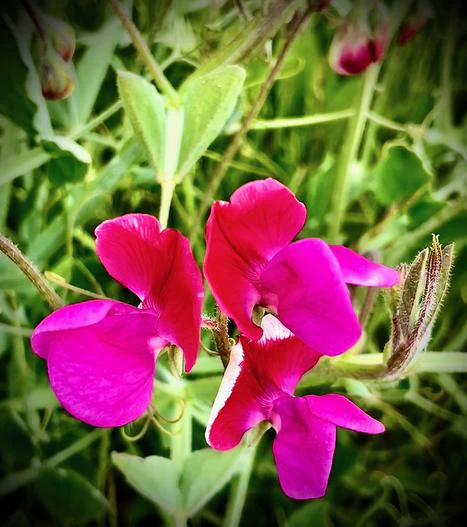Black-Pod Vetch
(Vicia sativa subsp. nigra)
Black-Pod Vetch (Vicia sativa subsp. nigra)
/
/

Peter D. Tillman
CC BY-SA 2.0
Image By:
Peter D. Tillman
Recorded By:
Copyright:
CC BY-SA 2.0
Copyright Notice:
Photo by: Peter D. Tillman | License Type: CC BY-SA 2.0 | License URL: https://creativecommons.org/licenses/by-sa/2.0/ | Uploader: Pete Tillman | Publisher: Flickr





















Estimated Native Range
Climate Requirements for Springfield, Virginia
| This Plant | Your Site | Plant Suitability for Your Location | ||
|---|---|---|---|---|
| • Precipitation | 4" - 121" | 41" | Aquatic | Aquatic |
| • High Temp. | 54°F - 111°F | 88°F | Your summer temperatures are normal for this plant. | Excellent |
| • Low Temp. | -25°F - 61°F | 25°F | Your winter temperatures are normal for this plant | Excellent |
This plant may not grow well at your location - your precipitation is too high.
Summary
Vicia sativa subsp. nigra, commonly known as Black-Pod Vetch, Narrow-leaved Vetch, Common Vetch, or Garden Vetch, is a semi-deciduous herb that is part of the legume family. It is native to a variety of habitats in Europe, Western Asia, and North Africa, including roadsides, fields, waste places, and open woodlands. This vetch is often found in nitrogen-poor soils where it enriches the soil by fixing nitrogen through its root nodules. It grows at a moderate rate to a typical height and width of 1.5-3 feet (0.46-0.9 meters). The plant features tendrils that allow it to climb and support itself on other vegetation. Its appearance is characterized by pinnate leaves and showy pink or purple flowers that bloom in the spring and summer, followed by distinctive black pods.
Black-Pod Vetch is valued for its ability to improve soil fertility and is used in agriculture as a green manure and cover crop. It is also planted in gardens for its attractive flowers and as a beneficial plant for pollinators. In cultivation, it requires full sun or part shade and thrives in a range of soil types, including clay, loam, or sandy soils with medium or fast drainage. It is drought-tolerant once established and has medium water needs. While it is not commonly afflicted by diseases, it can become weedy and potentially invasive outside its native range, so caution is advised when planting it in areas where it may spread uncontrollably.CC BY-SA 4.0
Black-Pod Vetch is valued for its ability to improve soil fertility and is used in agriculture as a green manure and cover crop. It is also planted in gardens for its attractive flowers and as a beneficial plant for pollinators. In cultivation, it requires full sun or part shade and thrives in a range of soil types, including clay, loam, or sandy soils with medium or fast drainage. It is drought-tolerant once established and has medium water needs. While it is not commonly afflicted by diseases, it can become weedy and potentially invasive outside its native range, so caution is advised when planting it in areas where it may spread uncontrollably.CC BY-SA 4.0
Plant Description
- Plant Type: Herb
- Height: 1.5-3 feet
- Width: 1-3 feet
- Growth Rate: Moderate
- Flower Color: Pink, Purple
- Flowering Season: Spring, Summer
- Leaf Retention: Semi-deciduous
Growth Requirements
- Sun: Full Sun, Part Shade
- Water: Medium
- Drainage: Medium, Fast
Common Uses
Bee Garden, Erosion Control, Low Maintenance
Natural Habitat
Native to a variety of habitats including nitrogen-poor soils in Europe, Western Asia, and North Africa
Other Names
Common Names: Narrow-leaved vetch, Common vetch, Garden Vetch, Narrow-Leaf Vetch
Scientific Names: Vicia sativa subsp. nigra, Cracca timbaliana, Vicia abyssinica, Vicia amphicarpa f. albiflora, Vicia amphicarpa f. hortensis, Vicia amphicarpa f. microcarpa, Vicia amphicarpa f. parvifolia, Vicia amphicarpa f. paui, Vicia amphicarpa f. uliginosa
GBIF Accepted Name: Vicia sativa subsp. nigra